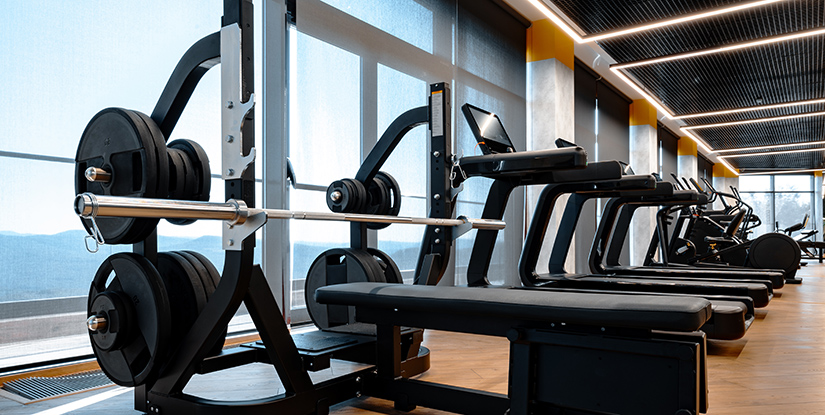Pull Up Bar: Buy, Install, and Train Safely

Introduction to Pull-Up Bars
Pull-up bars are foundational pieces of fitness equipment that deliver high-value strength training for the upper body and core. Compact, cost-effective, and versatile, a pull-up bar supports exercises that build pulling strength, improve posture, and enhance muscular endurance. This guide provides professional, practical information to help athletes, trainers, and home exercisers select, install, and program pull-ups safely and effectively.
Key Benefits
- Upper-body strength: Primary engagement of latissimus dorsi, biceps, rhomboids, and forearms.
- Core stability: Isometric demand on abdominals and obliques during controlled movement.
- Functional movement: Transfers to daily tasks and athletic performance by reinforcing pulling mechanics.
- Scalability: Progressions from assisted variations to weighted pull-ups enable continuous overload.
- Space-efficiency: Suitable for home gyms; many models are door-frame or wall/ceiling mounted.
Types of Pull-Up Bars
- Doorway bars: Affordable, easy to install and remove. Ideal for beginners and apartments but limited by doorframe strength and clearance.
- Wall-mounted bars: Robust and stable. Require secure anchoring into studs or masonry; suitable for heavy use.
- Ceiling-mounted bars: Offer varied grip placement and high clearance for kipping or muscle-ups; installation involves joist or anchor systems.
- Freestanding rigs and power racks: Commercial-grade, multi-station setups for gyms and advanced athletes; highest cost and footprint.
- Portable and foldable bars: Designed for travel or temporary use; check load ratings and durability.
Selection Criteria
Choose a pull-up bar based on capacity, grip variety, installation constraints, and training goals. Key specifications include:
- Weight capacity: Always exceed user bodyweight plus added load for weighted pull-ups.
- Grip options: Neutral, pronated, supinated, and multi-grip handles increase exercise variety and reduce repetitive strain.
- Clearance and space: Ensure adequate headroom and swing radius to avoid injury.
- Material and finish: Durable steel with corrosion-resistant coating for longevity and reliable hand traction.
- Mounting method: Choose installation compatible with your wall type (drywall, concrete, studs) and rental restrictions.
Installation and Safety
Proper installation is critical to performance and safety. Follow manufacturer instructions and professional guidance:
- Locate and use structural supports (wall studs, concrete anchors, ceiling joists).
- Use hardware specified for the load rating; avoid generic screws or anchors not rated for dynamic loads.
- Verify clearance for full range of motion and for kipping if performing dynamic movements.
- Inspect the bar and mounting points regularly for wear, corrosion, or loosening.
- Practice safe progressions—use bands or assisted machines for initial strength development.
Programming and Progressions
Design programs to build volume, strength, and technical proficiency. Typical approaches include:
- Volume-based training: Multiple sets of moderate reps (e.g., 4–6 sets of 6–12 reps) for hypertrophy and endurance.
- Strength-focused: Lower repetitions with added resistance (weighted belts, vests) and longer rest periods.
- Skill and technique: Practice strict pull-ups, scapular pull-ups, and controlled negatives for motor control.
- Assistance methods: Resistance bands, assisted pull-up machines, or partner assistance to manage progression.
- Variations for balance: Introduce chin-ups, neutral-grip rows, and ring rows to mitigate overuse and balance pushing-pulling ratios.
Maintenance and Longevity
Extend the life of your pull-up bar with routine care:
- Wipe down after use to remove sweat and limit corrosion.
- Lubricate moving joints if applicable and tighten fasteners periodically.
- Replace worn grips or padding to maintain secure hand contact.
- Monitor anchors and wall interfaces for cracks or deformation.
Buying Guide: Practical Tips
- Prioritize a conservative weight rating—choose a bar rated well above your maximal expected load.
- Consider multi-grip designs for exercise variety when space is limited.
- For heavy or dynamic training, prefer wall- or ceiling-mounted steel bars with professional installation.
- Budget for additional accessories: weight belts, resistance bands, and protective padding.
- Read warranty and return policies; reputable brands provide clear load specifications and customer support.
FAQs
1. Can anyone use a pull-up bar?
Yes. With appropriate progressions (band assistance, negative reps), users at varied fitness levels can train safely.
2. Which type is best for small apartments?
Doorway bars or compact wall-mounted units are ideal; confirm doorframe strength and clearance first.
3. How do I know if my wall can support a mounted bar?
Identify studs or use concrete anchors; if unsure, consult a contractor to verify structural integrity.
4. How often should I inspect the bar?
Inspect visually before each session and perform a thorough check monthly or after heavy use.
5. Are pull-ups safe for people with shoulder issues?
Shoulder-friendly variations and limited range-of-motion work can help; consult a medical professional for injuries.
6. How can I increase pull-up reps?
Use consistent progressive overload: assisted reps, negatives, increased frequency, and targeted back conditioning.
7. Is chalk recommended for pull-ups?
Chalk improves grip and reduces slip, but check facility rules and clean residue from home installations.
8. Can I perform kipping or muscle-ups on any bar?
Dynamic movements require high clearance and a rigid, professionally mounted bar rated for impact loads.
9. What accessories complement a pull-up bar?
Resistance bands, weight belts, gymnastic rings, and chalk are common additions to expand training options.

